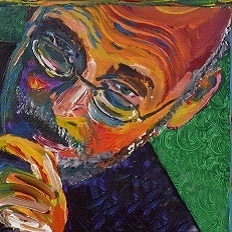Friction
The forces of physics can explain clinical and other functions of the hospital.
On a snowy December day, Agnes Mahongahil decided she would walk down to check her mail. She did not think her driveway would be very slippery. In this regard, unfortunately, she had misjudged the perilous conditions. Even the ambulance bringing her to the hospital slid down the hill by her home.
At the hospital, Josephine Smook-Johnson, chair of the finance committee, was examining a spreadsheet, mystified by the excessive backup of accounts receivable, accrued over 120 days. Why was the process taking so long? How come nobody was willing to change how things were done?

Jasmine Rabinowitz left the hospital frustrated by her first clinical rotation as a medical student and decided she needed to check out the pool at the health club. But each stroke seemed like she was dragging herself through molasses. She was exhausted by the time she had completed three laps.
These scenarios demonstrate the importance of the friction. We need a bit of friction to propel ourselves forward and to keep our cutlery on the table, but not so much friction that movement comes to a standstill. There are four basic types: static, which keeps things in place; sliding, which moderates the ability of one object to move across another; rolling, as in a tire; and fluid, which impacts how objects move though liquids or gases. Each is modified by a frictional coefficient, which reflects the intensity of the effect.
Many laws of physics apply to the practice of medicine, both clinically and in other spheres, and friction is definitely a prevalent one. The patient slipped on the ice due to its low frictional coefficient, as did the ambulance's wheels. The medical student in the pool was fighting the power of hydraulic friction. As for the accounts receivable, that process faces static friction, the difficulty of overcoming not only the stickiness of the current process but the number of separate contacts each bill makes in its travels: the doctor who documents the encounter, the coders who convert it into a charge, the insurance company that pays or denies the claim, and the collection of that payment, if it ever comes at all.
In the hospital, too little friction can cause change to be made too quickly, without adequate time to study the repercussions, but too much friction can prevent improvement from happening. So for each situation, there is an ideal amount of friction—not so little that everything is smooth as glass all of the time, but not so much that we live on sandpaper.
In the end, Mrs. Mahongahil went home with no fracture found; the normal low-friction function of her native hip joint was happily preserved. Ms. Smook-Johnson was able to simplify the billing process with automation and education, and the accounts receivable list shrunk. The student, however, could not get past a third lap in the pool. At last account she was trying out pickleball. Hopefully she won't slip with her new court shoes, but if so, the orthopedic department awaits.



